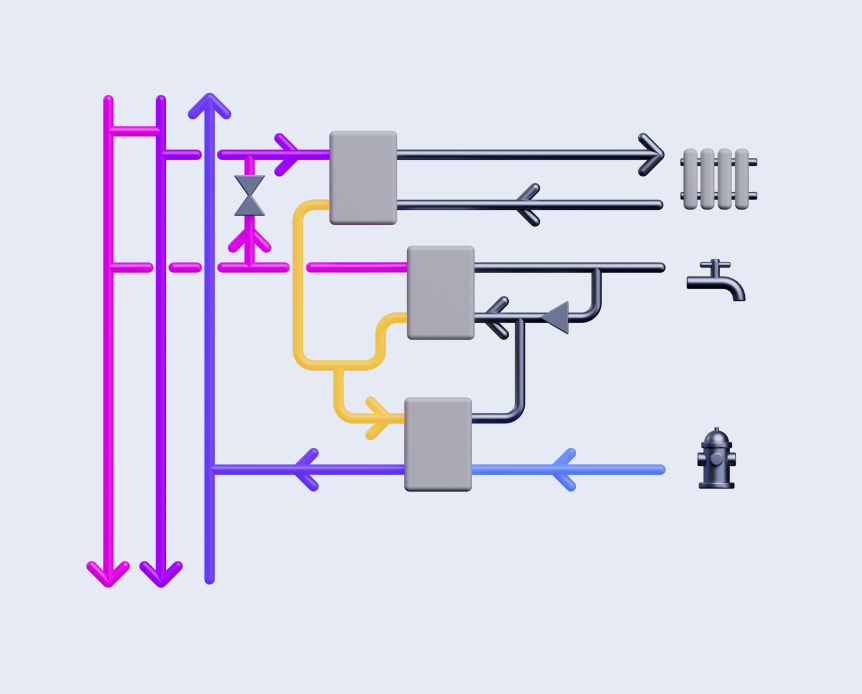

Our world faces huge challenges in terms of the climate, and we need to reduce our carbon dioxide emissions and become more energy efficient. District heating has a key role to play in making our cities more sustainable – we call its development the next generation of district heating and cooling.
Lower operating temperatures enable the use of residual heat from multiple sources. Lower temperatures make it possible to use what is known as “low-value energy” – customers’ waste heat can be used and shared between properties and from customer to customer, for example. At the same time, extensive use of digitalisation and system optimisation in all areas from production, distribution and customers, creates “real value” within circular processes.

By digitalising and optimising the district heating and energy system, we make energy use more efficient and benefit from “low-value residual heat and residual cooling”. By using a centralised heat source, we have been able to reduce emissions of carbon dioxide and other air pollutants. Circulation and reuse of energy reduces the need for new power and energy production.
Lower operating temperatures also make it possible for more electricity production in cogeneration plants. This frees up electricity in the power grid and heat to district heating networks – a genuine win-win.
Lower operating temperatures, thermal networks and accumulation also allow us to be more flexible and take advantage of volatility on the electricity market. When green electricity is cheap, we can produce more heat that can be stored for use when renewable electricity production is unavailable. In this way, the next generation of district heating functions as a highly efficient electric battery.
A key component of the next generation district heating is the collector – the new third pipe in the district heating network.
The collector is decisive for the next generation district heating, i.e., the third pipe that makes it possible to distribute energy/electrical power between customers. Properties with excess heat can share heat with properties that need heat instead. This optimises energy use throughout the network.
With the help of the collector and digitalisation, we can control energy flow and ensure that energy is used where it is most needed.
A description of the next generation district heating and district cooling including general principles, design and primary solutions.

For general questions, please contact Niclas De Lorenzi (Business developer)
For general questions, please contact Camilla Emretsson (Business developer)